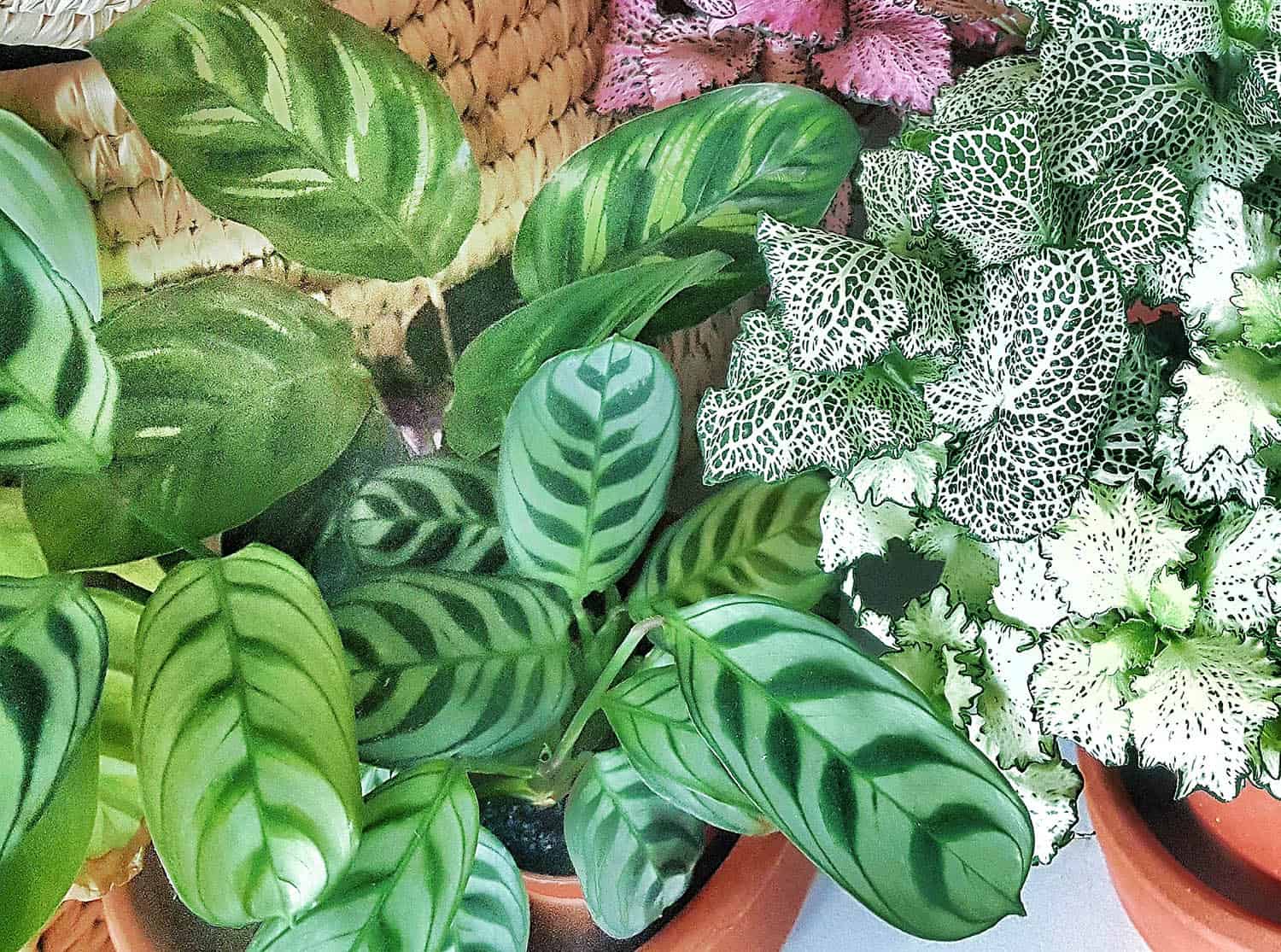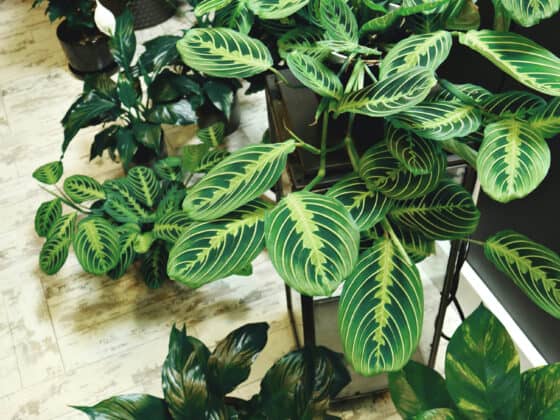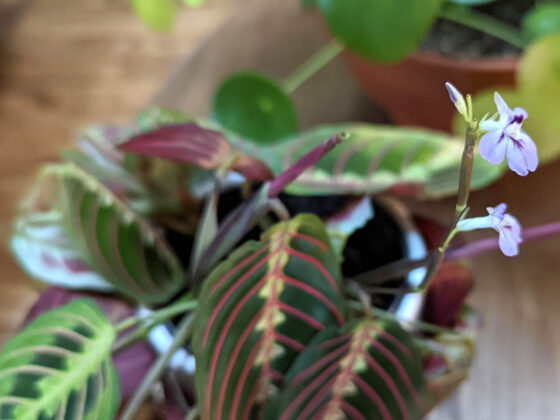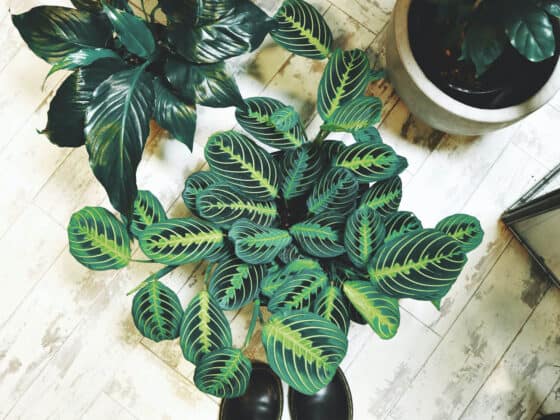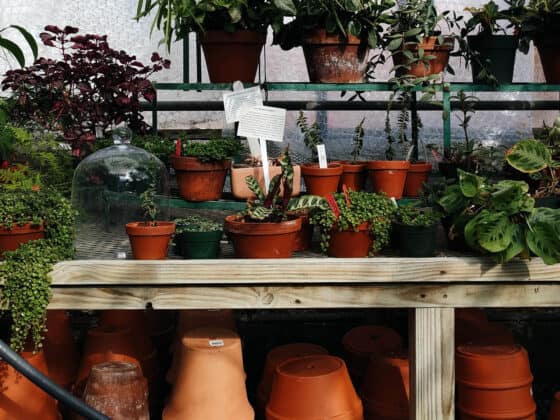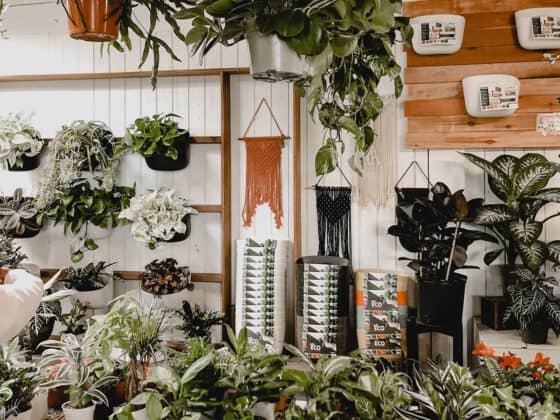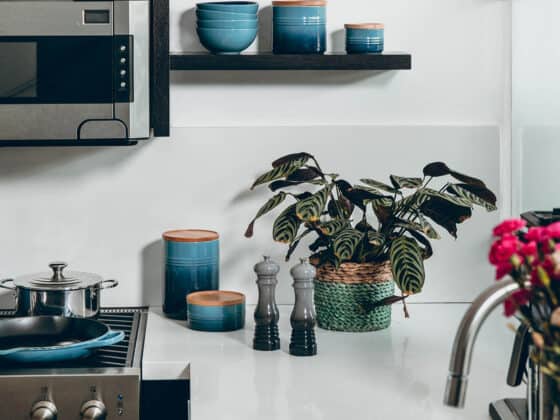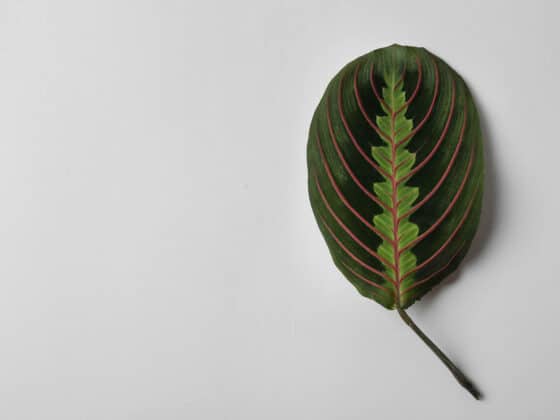Maranta leuconeura, aka Prayer Plant, is an attractive tropical plant that has distinctive patterned leaves. Although it can produce flowers, the real appeal of the Prayer Plant is in its unmistakable foliage. There are a few different types of Prayer Plant readily available to purchase, but a shared trait across species is their bold, deeply-colored leaves. So what should you do if that beautiful color starts to fade?
Prayer Plants lose their bright color and turn pale with improper watering, too much or too little light, or nutrient deficiencies. Loss of color in the leaves is a typical indicator that there’s an issue with the plants. Marantas will soon put out new leaves once you have provided the correct care and conditions.
The best way to keep this plant bold and deeply colored is to provide the conditions that allow it to grow strong and healthy. Pale or yellowing leaves is the plant’s way of telling you something is wrong, so avoid them by giving it the best possible care you can. If your Prayer Plant leaves are losing color, keep reading-I can help!
Why Prayer Plants Lose Their Color
The loss of color in plant leaves is the result of a lack of chlorophyll, causing a condition called chlorosis. It may develop in just one or two leaves, or affect the entire plant. There are many reasons that Prayer Plants can develop chlorosis, but it is generally reversible if you catch the issue in time.
The most common cause of pale leaves in a Maranta leuconeura is something related to the root function. Waterlogged potting mix leads to roots that are unable to absorb nutrients as they should. This can create a nutrient deficiency in the plant overall, which causes yellowing leaves.
In serious cases of overwatering, the roots can develop a fungal or bacterial infection. Since this all happens beneath the surface of the soil, many plant owners don’t realize what is happening to the root system until it is too late. If you see unexpected changes to the color of your Prayer Plant, check the roots as soon as possible to diagnose any root issues.
Even if the roots are white, crisp and healthy, if the potting medium is depleted of nutrients (perhaps because it is old, or low quality), there will be nothing for the Prayer Plant to absorb through those roots. You may want to repot and/or fertilize the plant if this seems to be why the plant is losing color.
Too much light and too little sunlight, confusingly, can both result in pale leaves on a Maranta. A Prayer Plant that has too much sun may also show brown, crisp spots on the leaves indicating sunburn. If there’s not enough light, the pale leaves will be accompanied by the plant getting leggy as it stretches toward the light source.
What To Expect from a Healthy Prayer Plant
Some variation from one leaf to another can be expected in a healthy Maranta. New leaves will be a lighter color, almost yellow in some cases, and then darken as the leaf opens and matures. If your new leaf looks lighter, just give it a couple of weeks to monitor its progress. If you see it get more pale over time, that’s cause for concern. In a healthy plant, it will be the lightest color when it opens and then gradually darken.
Older leaves will also sometimes lose color and die off as part of the natural growth of this plant. You would most likely see the lowest leaves (closest to the soil) start to die off as new leaves open above them and block the light reaching them. As long as you are seeing healthy new growth at the same time, you do not need to worry about a few of the older leaves falling off.
Can I Save a Pale Prayer Plant Leaf?
Once your Prayer Plant’s leaf loses its color or turns yellow, unfortunately you will not be able to nurse that leaf back to health. Keeping dying leaves around diverts resources away from the rest of the plant, so the best option is to trim off any discolored leaves with a sharp, sterilized pair of scissors. This allows the plant to focus its energy on new growth.
It can be discouraging to cut pale leaves off your Maranta, especially if there are a lot of them that have to be pruned. Luckily, though, this plant usually puts out new leaves quickly. As you’re pruning, it’s best to never cut back more than ⅓ of the total leaves at any one time, even if many are pale – so keep this in mind as you start to cut.
Keeping Prayer Plant Leaves Dark
Maranta leaves will keep their dark color when the plant is healthy. Pale leaves can be a sign of one or more problems with the care or conditions provided to your Prayer Plant, so keep in mind these tips to keep your plant in the best condition.
Proper Watering. Allowing a Prayer Plant to get too dry or too wet can cause pale or yellowing leaves. Although Marantas prefer more moisture than many other popular plants, they are sensitive to overwatering. Aside from leaf color, signs of overwatering include droopy stems, musty smells or a moldy film developing along the top of the soil.
To avoid overwatering, be sure that the container has drainage holes, and that the potting soil isn’t too dense. Provide enough water that it runs through the container and out the drainage hole, but do not let the pot sit in the water after it has drained out.
Watering frequency varies depending on the season and the conditions in your home (temperature, humidity, light). Some types of potting soil also dry out much more quickly than others, so the best way to judge when to water your Maranta leuconeura is to check the moisture level with your finger. Since they naturally grow in rainforests with consistently moist soil, Prayer Plants dislike drying out too much. A good rule of thumb is to let the top 1-2 inches of potting mix dry out between waterings.
If you don’t like the thought of sticking your finger down into your houseplant’s dirt, you can always opt to purchase a moisture meter. When these devices are inserted into your Maranta’s soil, it will display the moisture level within and will give you a good idea of when it is time to water again.
Sufficient Light. Prayer Plants don’t need a lot of bright light, but that doesn’t mean they can survive in a dark room. These are not “low-light” plants, although they are often marketed that way. They need sunlight to photosynthesize, so a lack of color in the leaves can be a symptom of insufficient light exposure.
Too much sunlight can also cause Maranta leaves to lose color. Instead of turning yellow, you may see a bleached-out look to the leaves when this plant is exposed to too much sun. A north- or east-facing windowsill will suit this plant best.
Proper nutrients. If the whole Prayer Plant is losing color, it could indicate a nutrient deficiency. This usually happens when the plant has been in the same pot for a long time, leading to a rootbound plant or potting mix that has been depleted of nutrients. Repotting the plant and/or providing a balanced fertilizer can help correct the deficiency.
Both repotting and fertilizing are best done during the growing season, in the spring or summer. Although Prayer Plants slow their growth considerably during colder months. Introducing a lot of nutrients during this time (either in new potting soil or fertilizer) is unnecessary and could result in fertilizer burn.
Final Thoughts
Prayer Plants are a beautiful addition to any houseplant collection, but they are not the easiest to care for. One of the first and most obvious ways they show their reactions is by losing color in their usually darkly colored leaves. Since it’s not possible to reduce color loss once it has started, the best way to keep the leaves attractive is to try to prevent them from getting pale in the first place.
Proper care will ensure that Prayer Plant leaves stay bright and colorful, but it may take a little experimentation and a few mistakes before you figure out how to keep this one content in your home. Remember they are coming from nurseries with controlled temperature, light, and humidity before they end up in your house, so an adjustment period is normal. Don’t feel bad if your plant has a few pale leaves – your house is different from a rainforest! Just do your best and your Prayer Plant will likely adapt over time.






